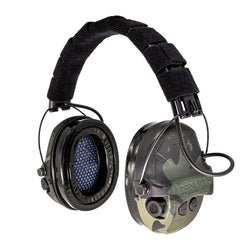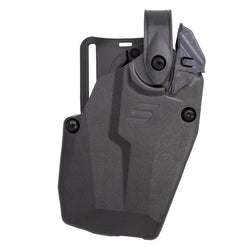Have you ever struggled to find your keys in the morning or forgotten to take out the trash on garbage day? If so, you’re not alone. People often find it hard to be prepared for even the smallest daily tasks, so the idea of being ready for major emergencies can seem like an impossible challenge.
But fear not! While getting ready for the big stuff might sound overwhelming, it’s actually an achievable goal with the right mindset and approach. Plus, it’s more important than ever to have a plan in place for those unexpected moments when life decides to throw a curveball your way.
Emergency preparedness isn’t just a one-time effort. It’s a continuous process that requires careful planning, regular updates, and ongoing training. We don’t change the oil in our car and call it good, do we? Ok maybe some do, but most of us keep up with it so the car is in good shape when we need it. Our home is no different when it comes to preparing for emergencies.

So, grab your coffee, coke, water, tea, or whatever you drink, and let’s get started. This will be the first part in a two-part series on how to make sure your home is ready for anything life might throw at you. Your future self will thank you someday for taking these steps.
What Kind of Events Should You Prepare For?
Emergencies come in many shapes and sizes, from natural disasters to man-made crises. Understanding the types of events you should prepare for is the first step toward preparing your home. Here’s a breakdown of some types of emergencies to consider:
Natural Disasters
We all know the unpredictability of natural disasters and how fast they hit us with little warning. Depending on where you live, certain types of natural disasters may be more likely than others.
Earthquakes
If you live near a fault line, earthquakes are a significant concern. I’ve never been in an earthquake, but I’ve seen the devastation they can cause. They are just as deadly and dangerous as any other natural disaster. So, if you fall in this category, make sure you keep this in mind as you start the planning process.
Ready.gov has basic instructions on what to do during an earthquake, but make sure you plan for the aftermath. This will include knowing where your water and gas disconnects are, and how to work them. Think about storing a Go-Bag in a location where you can reach it later, like a vehicle. If a lot of damage is done to a structure, you may not have access to all other supplies.

Hurricanes
Coastal regions are particularly vulnerable to hurricanes. These powerful storms can bring devastating winds, heavy rains, and storm surges that lead to flooding. They can also knock out power and other utilizes for long periods of time and cut off access to supplies.
Having water, food, and medical supplies is important during an event like this, but also think about where you store it. If your home can be flooded, find a place to keep supplies that won’t get damaged by the water. This could include water-proof containers or a shelving system that will keep them higher off the ground.
If you keep an emergency raft for severe flooding, consider a second one for carrying supplies.
Tornadoes
Tornado Alley in the central United States is notorious for its frequent and destructive tornadoes. This is where I live and most of my planning for natural disasters centers around tornados. These violent storms can level homes and uproot trees in minutes with little to no warning at times.
Having an alternate meeting place for the family is important so everyone knows where to go if a home is destroyed. If you have a storm shelter or basement, keep some supplies in that area. Some flooding is also possible during a big storm so keep that in mind as well. You can never go wrong with water-proof containers for all your supplies.
Wildfires
Areas with dry climates, such as California, are prone to wildfires. These fast-moving fires can consume vast areas of land and pose a significant threat to homes and lives. An important part of a home preparedness plan for this may need to include a way to quickly load some supplies in a vehicle so you can leave.

Make sure you already have multiple destinations picked out so you can quickly relocate to a safe area.
A go-bag for each person in the home is a great way to have some gear ready at a moment’s notice. Make sure these include maps of where you are going, a little cash for supplies if needed, and some basic water and food supplies.
Blizzards
In colder regions, blizzards can cause dangerous conditions, including power outages, impassable roads, and exposure to extreme cold. Even some areas that don’t experience will have the occasional fluke cold-weather storm. We forget how much we rely on our heaters, vehicles, and other luxuries.
I had to have a talk with one of my kids about running to the store in shorts and T-shirt in the middle of winter. Their reasoning was they would only be running from the house to the car and into the store. But what if their car breaks down, or some large-scale event happens, and they are stranded somewhere? Things don’t always go as planned so we must be prepared.
Other types of emergencies
While we don’t know when a tornado will strike or an earthquake could hit, we do know they happen from time to time. Planning for one of those events makes sense because most of us have seen it happen multiple times. But what about events that rarely happen or haven’t taken place in our lifetime?
Many Americans today have only read about our country being attacked at Pearl Harbor or when terrorists attacked the World Trade Center. We shouldn’t be so naive to think the US is immune to attack by another country.

We have all witnessed the chaos that has come from civil unrest and riots around the country. What if the next time is even worse? The problem is we don’t know what will happen so all we can do is prepare as much as possible.
Terrorist Attacks
While less common, terrorist attacks can happen anywhere and often without warning. Preparing for such events involves having a plan for evacuation, communication, and securing your home. Being prepared at home for a terrorist attack isn’t much different than other preparations. However, a few specific things to consider with terrorist attacks are power, communications, and general cyber-attacks.
You still want to have some food, water, medical supplies, forms of communication, and so on. Depending on the type of attack, the biggest issue may be a lack of emergency services or utilities. Cyber-attacks could render debit/credit cards useless and even knock out the power for some time.
Nuclear Emergencies
A nuclear emergency may be caused by a power plant for various reasons, or an attack. During a nuclear emergency, radiation will be the biggest concern. Determine the best place in your home to take shelter.
It may be necessary to relocate to a different structure if one is close enough. Try to identify a place made of concrete like commercial buildings, underground subways, parking garages, etc. The time from the initial blast to radiation fallout will vary depending on several factors. Ready.gov gives an average time of 10 minutes to take shelter before fallout will occur.
Making some preparations at home can still help, even if you must leave your home. Part of the go-bag I keep at home includes Potassium Iodide tablets to take during a radiation emergency, and a Geiger Counter to pick up radiation levels.

It is recommended to stay in place for the first 24 hours before trying to relocate to a safer place. So of course, food and water are also part of this bag.
Civil Unrest
Civil unrest can arise from political instability, economic hardship, or social tensions. Being prepared for such scenarios means having a plan to stay safe and secure in your home and away from all the chaos. Again, most of the preparations made for natural disasters will work for this type of threat too.
This type of threat along with most others can also increase the chances of burglary and theft. Being able to protect your home during an emergency also includes a method of self-defense, which we will talk more in Part 2.
Are you ready to begin?
Remember, being prepared is not about living in fear; it’s about being equipped to handle emergencies confidently and effectively. You may not be able to prepare for every possible scenario, but you can prioritize the most common ones when making your preparations for your home.

Anything that causes a mass panic can lead to a shortage of supplies. Just look at the great toilet paper shortage we saw during the COVID-19 pandemic.
The first step I took with my home was adding a security system for common threats like burglary and theft. Next, I prepared for tornados, which include power outages and shortages of supplies.
We have talked about why and what we should prepare our home for. In Part 2, we will talk more specifically about how to prepare your home for these types of emergencies. This includes water storage and filtration, food prepping, home defense, and more. See you next time!









